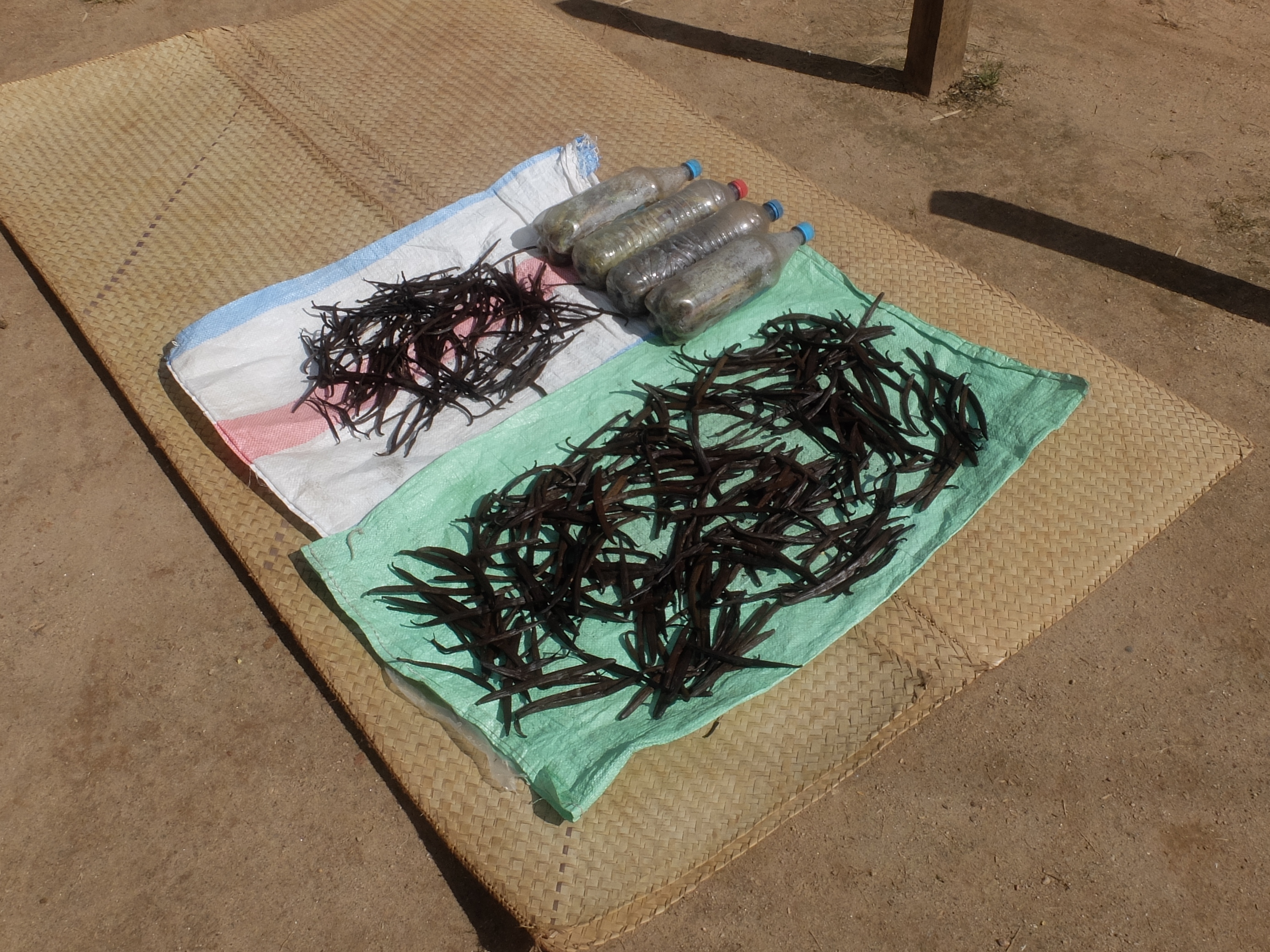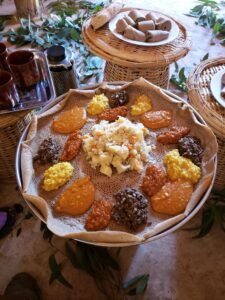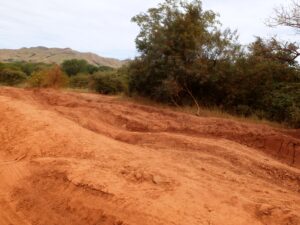
We were walking the trail past village rice paddies, gleaming with soon to be harvested grains in the valley below Marojejy National Park. From the outlying fields, two men carried large potato sacks back to town, perhaps 25 kg or more on their shoulders. Instead of potatoes, however, these sacks were filled with the most valuable crop around here, pods of vanilla bean. At $50 per kg locally for green pods, and $100 per kg for the dark brown, processed pods, each sack carried thousands of dollars of vanilla.
For we were on the northeast coast of Madagascar, where you find the perfect combination of climate, soil and hard work that top quality vanilla requires – even though the plant is native to South America instead.
The vanilla bean we knew at home could be sold for $4-5 each, weighing almost nothing, or a few ounces of processed watered-down and alcohol-laced extract for $8-10. As cooks know, with the bits of vanilla you use for home-made ice cream or cakes, a little goes a long way. Given the cost of the real stuff in the field, that’s a very good thing.
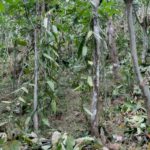
Natural vanilla comes from the bean pods produced by a big-leafed vine that is a actually an orchid. The pods looked to us like string beans. But each narrow pod is so valuable that the crop owners etch each one early in its growth with a unique mark to prevent theft.

The vine takes several years to mature, twisting it’s way around well spaced thin but sturdy tree trunks planted for the purpose, often along the shadier edges of the huge rice fields. The vines don’t like to be crowded or get too hot. And they often require the kind of attention usually reserved for children. When they start producing flowers, they have to be pollinated by hand, one flower on the vine at a time, day after day in the morning. The original insect pollinators are no longer around.
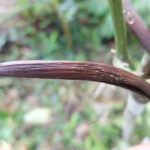
For the next eight months, growers must keep checking the vines’ well-being, clearing space around them and ensuring healthy – and carefully marked – pods. Then, picking them several times a week just as they ripen, growers can sell the green pods to processors who automate the methods of turning the pods dark chocolate.

Or they do the laborious manual processing themselves to sell at higher prices. That’s when the real pod coddling begins. Daily, for a month, the green pods are washed, then wrapped in blankets, then laid out for an hour maximum in the morning sun. If it rains, workers must rush to protect the pods or they will be ruined.
Finally, if all works out right with weather and care, village growers can sell the nurtured product at that $100 per kilo. And thereby, together with the extensive rice harvest and several other cash crops, fare pretty well economically.
So, next time you order vanilla in any form, well, be generous. Make it a double.
(Also, for more pictures from Madagascar, CLICK HERE to view the slideshow at the end of the itinerary page.)


